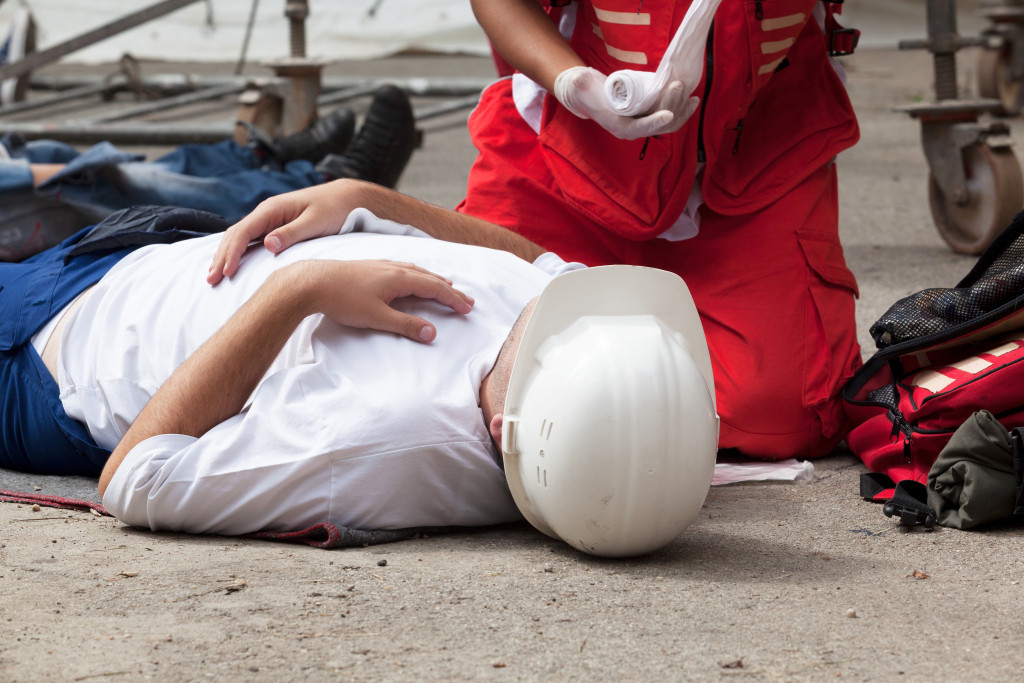The number of nonfatal workplace illnesses and injuries in the private sector for 2021 was around 2.6 million. The figure is 1.8 percent lower than in 2020. The Survey of Occupational Injuries and Illnesses (SOII) provided the estimates. The rate of total recordable cases (TRC) was 2.7 per 100 full-time equivalent workers. This number is the same as in 2020.
Overall, the data from 2021 indicate that workplace injury and illness numbers continue to decline. Despite this, employers must remain committed to promoting safe practices and improving their work environment to ensure the health and safety of their employees.
Everyone knows that accidents can happen at work. Whether it’s slipping on a wet floor or straining your back while lifting heavy boxes, workplace accidents are far too common. But what happens after the accident? How should you ensure you get the care and support you need for a successful recovery? Here’s a look at what happens.
Seek Medical Attention Immediately
If you experience any workplace accident, the first step is to seek medical attention immediately. You should always call 911 or visit your nearest emergency room if there are any signs of serious injury or distress. Even if the injury doesn’t seem serious, it’s essential to follow up with your primary care provider for a complete checkup and to discuss any long-term care needs.
Getting medical attention can also be used as evidence in filing a workers’ compensation claim. Your medical records will document the extent of your injuries and their cause, which is essential for demonstrating that you are entitled to financial compensation from your employer.
It also prevents the injury from becoming worse. Prompt medical treatment can often prevent the injury from worsening and causing more serious pain or permanent disability. Early diagnosis and treatment also increase the chances that you will recover more quickly and with less discomfort.
Finally, seeking medical attention after a workplace accident is also vital for your emotional health. Receiving professional care can help you cope with any anxiety or stress.

Report the Accident
Once you have received medical attention, you must report the incident to your supervisor or human resources department as soon as possible. Your employer may be required by law to report all workplace accidents and injuries, so they need to know what happened to comply with regulations.
It is essential to provide as much detail as possible when reporting the accident. The report should include dates and times of the incident, what happened before and after it occurred, any witnesses present, and any safety regulations that may have been violated.
Be sure to keep a copy of your report for yourself so you can refer back to it if needed. Additionally, you may need to provide a written statement or other documentation to your employer regarding the incident.
Remember that employers must document all workplace accidents and injuries for insurance reasons and prove they are doing their best to maintain a safe work environment. Your cooperation in reporting the accident will help them fulfill this obligation.
You can also look for a reliable agency to help you get your disability benefits. The agency should have the knowledge and experience in appealing a decision if your claim is denied. They should also have a good understanding of the laws and regulations that govern workers’ compensation claims.
Request Accommodations and Follow-Up Care
In some cases, an employee may need special accommodations to recover from an on-the-job accident. For example, they may require ergonomic furniture or special equipment to return safely and comfortably to their job role. This is essential if an employee has suffered a back injury due to improper lifting technique.
Additionally, employees who have experienced an on-the-job accident may also require follow-up visits with physical therapists or other healthcare providers to recover fully. Employees should communicate these needs clearly with their employers and ensure that these requests are being met before returning to their jobs.
Making sure that all medical care and accommodation needs are met can ensure that the employee can make a complete and safe transition back into their job. It will also reduce any legal liability issues that may arise due to improper management of an on-the-job accident.
Employers should take proactive steps in providing the appropriate accommodations and follow-up care for their employees after an on-the-job accident. By doing so, employers can protect their employees’ health and well-being and the organization from any potential legal issues that may arise due to improper management of the situation.
Following an accident at work can be challenging both physically and emotionally. But taking steps like seeking medical attention immediately and communicating any special needs can go a long way. It can ensure that employees receive the support they need throughout their recovery. With proper care and accommodations, employees can fully recover after an on-the-job accident – making it possible for them to return safely and confidently to their jobs once again.




